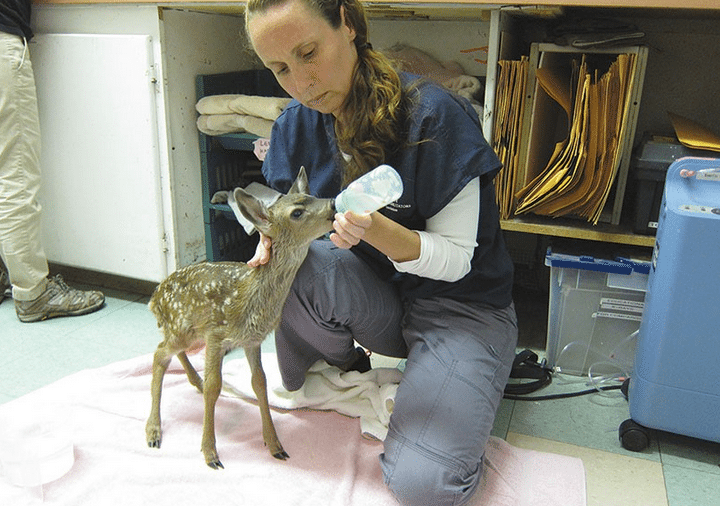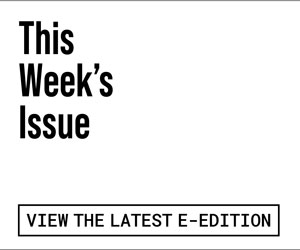By Ellen Shehadeh
Cross a bamboo-lined creek, enter a tiny courtyard, and you’ve left downtown San Rafael and arrived at WildCare animal sanctuary. There’s a musky scent of animals and roomy enclosures of weathered wood, which house all sorts of critters, including Vladimir the vulture, one of the “ambassadors” WildCare brings to schools.
WildCare has been a wildlife resource since the 1970s, and was founded under Bay Area environmentalist Elizabeth Terwilliger’s motto, “You take care of what you love.” Terwilliger was an environmental educator who developed the sanctuary’s multisensory educational approach and philosophy.
WildCare executive director Karen Wilson keeps the organization humming with activity and energy. Among numerous activities and pursuits, the sanctuary partners with other nonprofits like The Humane Society, consults with the EPA on issues around pesticide regulation and has also weighed in on contentious white deer and elk issues in West Marin. The organization’s annual $2.5 million budget is spread across multiple programs, but lately the fundraising efforts have been targeted at a new WildCare facility to be located at the end of Smith Ranch Road in San Rafael.
As WildCare prepares a migration to new facilities, Wilson says that no matter how much the animal sanctuary expands, she is intent on maintaining “the quirky family feel” that’s evident the minute you walk into this sylvan sanctuary for animals in distress.
They do it all here: Guided nature walks for kids, ambassador programs that take animals into the schools, free bilingual family adventures on the weekends and WildCare Solutions Service, which offers assistance with humane pest control and fields phone calls around the clock from places as far away as Egypt.
Just off the courtyard is the main building, a rabbit warren of spaces that accommodates an animal hospital and office space for staff. Melanie Piazza, the director of animal care, has been with WildCare for 13 years and has an extensive background treating animals. She’s not a veterinarian, but WildCare enlists volunteer local vets whenever surgery is necessary in the hospital. Animals who come here are either euthanized, if they can’t recover and live independently, or become animal ambassadors.
Piazza’s private life comes to a screeching halt during the warm months, which coincide with animals’ breeding seasons. It’s no big secret that humans and animals often live in close proximity to one another in the North Bay, and there’s always another injury to address where animal-human interactions are concerned.
Someone may cut off a tree limb that houses a bird or squirrel nest; ducks may be caught in carelessly discarded fishing lines; an animal may have been shot with a BB gun. WildCare has seen it all, but most of the organization’s patients suffer from injuries caused by domestic cats.
“Outdoor cats wreak havoc on local wildlife,” Piazza says. She loves cats but keeps hers in a “cat-i-o,” a screened-in enclosure.
Last year, more than 2,000 songbirds were brought to the hospital, but this year, global warming has led to a crisis among seabirds. Unable to find food, hundreds of emaciated, mostly juvenile murres—penguin-like seabirds—are washing up on California shores.
Should you encounter an injured bird or any other small animal, WildCare stresses that you not feed or handle it. It should be picked up with a towel and put into a box with air holes; larger animals should be covered with a sheet for transport. The Humane Society has a 24-hour contract with WildCare to pick up injured animals and bring them to the facility. Should a bird fly into a closed window, it should be placed in a box or paper bag for a half-hour. If it can’t fly, bring the bird to WildCare.
Though WildCare often treats the common injuries that occur when humans collide with nature, its education component puts an emphasis on preventing such situations from occurring in the first place. That starts with knowing the animals in our midst, and every year thousands of kids and adults from San Francisco to Santa Rosa and the East Bay get involved at WildCare.
Kids learn about banana slugs, spiders and wood rats, which may not interest adults but are perfect specimens for teaching about all of the living creatures we share space with. Did you know that banana-slug slime anesthetizes the tongue of any predator who might otherwise find it a tasty morsel? Now you do.
Eileen Jones is the education program manager at WildCare, and brought 30 years of environmental education experience when she came here a few years ago. She designs training programs and coaches the nature guides along with Marco Berger, who speaks French and Spanish, and takes a particular interest in making WildCare activities bilingual-friendly. Berger is also in charge of the “Nature Van” that visits Bay Area schools with taxidermy specimens of local creatures, and leads free weekend family adventures with (mostly) Latino families.
The organization also fields an ambassador program, led by teacher and biologist Mary Pounder. She brings wild animals into the classroom, including Vladimir the vulture, who, like all ambassador animals, had injuries that meant he could not be released back into the wild. One of Pounder’s main objectives in the classroom, she says, is to teach kids that the animals are not pets. They’d rather live in the wild but can’t because of their injuries.
And then there are the animals that live in the wild but would rather eat your garbage or spray Fido with foul-smelling stuff. The Wildcare Solutions Service (headed by Kelle Kacmarcik) offers all sorts of advice on non-lethal and humane methods for evicting unwanted wildlife—raccoons, skunks, etc.—from in and around the home.
When do-it-yourself methods fail, a trained worker can help out. Some solutions are as simple as removing the attraction, such as bowls of water, or making a loud noise when you enter your garden to scare off the skunks.
Poisoning is a big issue that the staff deals with on a routine basis. Eighty-six percent of the animals that eat rats and mice and are brought into WildCare for injuries already have rodenticide in their systems. And the poison works its way up the food chain to the raptors, foxes and other animals that hunt rodents.
The organization also deals with a common misconception that trapping and relocating wildlife is a humane approach to ridding the home of unwanted animals. Trapping a raccoon during breeding season can orphan the wee ones, and animals released into unfamiliar territories often suffer undue stress. They can also spread disease. Animals who are treated at WildCare for their injuries are released back into the world exactly where they were found. Unless, of course, the animal was found in your house.
For more info, visit wildcarebayarea.org.








